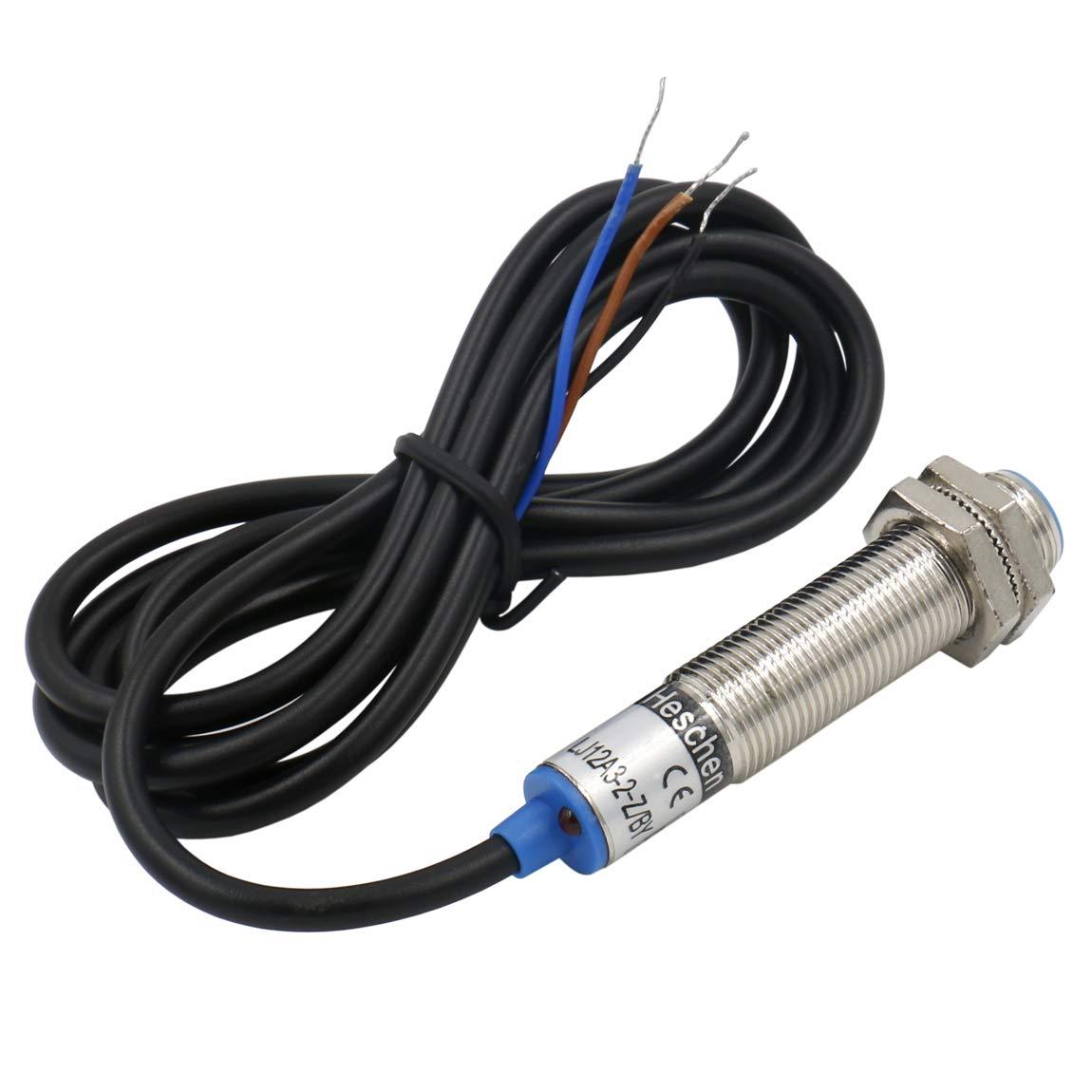Introduction
The oscillator generates an alternating magnetic field. When the metal target is close to this magnetic field, the eddy current is generated in the metal target, resulting in oscillation attenuating, so that the oscillation is caused. The change in oscillator oscillator and the changing vibration is processed by the post-level amplification circuit and converted into a switch signal, triggered the drive control device, thereby achieving the detection of the non-contact type
principle
2. Hall proximity switch Working Operation
Principle Introduction:
When a metal or semiconductor sheet is placed in a magnetic field vertically, the two ends of the sheet generate potential difference. This phenomenon is called Hall effect. The potential difference between the two ends is called the Hall potential u, its expression is
u = k · i · b / d

where K is the Hall Coefficient, i is The current passed in the sheet, B is the magnetic induction strength of the external magnetic field (Lorent Lorrentz), and D is the thickness of the sheet.
This shows that the sensitivity of the Hall effect is a relationship between the magnetic induction strength of the external magnetic field.
The Hall switch belongs to this active magnetoelectric conversion device. It is based on the principle of Hall effect, which is made of integrated packaging and assembly process. It is convenient to input magnetic input signals. Convertion into an electrical signal in the actual application, but also requires the actual application of easy operation and reliability in industrial applications.
The input of the Hall switch is characterized by magnetic induction strength B. When the B value reaches a certain degree (such as B1), the trigger inside the Hall switch flip, the output of the Hall switch The flat state also flips. The output is generally used in transistor output, and other sensors are similar to NPN, PNP, normally open, normally closed, latch (bipolar), and dual signal output.
Hall switch has the characteristics of unconfluenza, low power, long service life, high response frequency, internal use of epoxy resin blocking into integrated, so it can work reliable in various harsh environments . The Hall switch can be applied to proximity sensors, pressure sensors, miles, etc., as a new type of electrical accessories.
Principle of linear proximity sensor
Working principle:
Linear proximity sensor is a linear device belonging to metal induction, after powering, in the sensor The induction surface will produce an alternating magnetic field. When the metal object is close to this sensor, the energy generates eddy current to absorb the energy of the oscillator, so that the oscillator output amplitude is linearly attenuated, and then non-contact detection according to the amount of attenuation. The purpose of objects.
The proximity sensor has no slip contacts, which are not affected by non-metallic factors such as dust during operation, and low power consumption, long life, can be used under various harsh conditions. Linear sensors are primarily applied to the intelligent control of analog to automated equipment production lines.
Inspiration proximity switch
Working principle
The inductive proximity switch consists of three parts: oscillator, switching circuit, and amplify output circuit. The oscillator produces an alternating magnetic field. When the metal target is close to this magnetic field, the eddy current is generated in the metal target, resulting in oscillation attenuating, so that the oscillation is caused. The change in oscillator oscillator and the changing vibration is processed by the post-magnification circuit and converted into a switch signal, triggered the drive control device, thereby achieving the detection of non-contact type.
